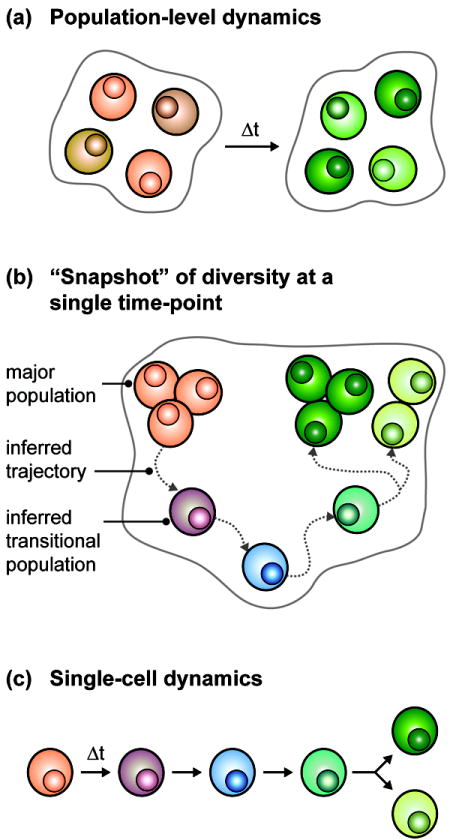Figure 2.

Approaches for assessing dynamic T cell behavior. (a) Global transitions can be analyzed by studying how populations of T cells change over time. Although the cells comprising each population share common features, there is likely cell-to-cell variability within the population that will be masked by bulk analysis. (b) Trajectories of cells as they move through a continuum of states can be inferred from detailed profiles of the T cell population at a single point in time. These profiles do not explicitly track cellular dynamics, but they can identify and characterize putative transitional populations linking more stable major populations. (c) Direct monitoring of an individual cell (and possibly its progeny) over time reveals the dynamic trajectories of each.
